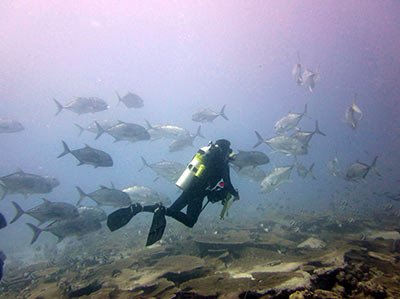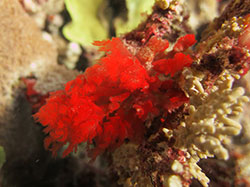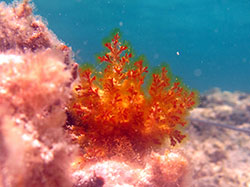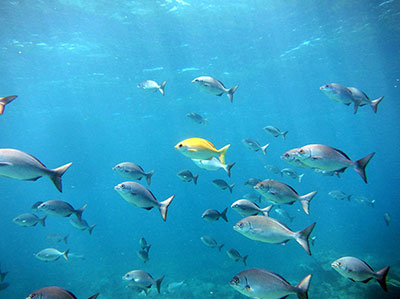RAMP | August 20, 2014: What is RAMP, exactly?
The Reef Assessment and Monitoring Program (RAMP) in the NWHI began in 2000 as the NOWRAMP, during which researchers conduct rapid ecological assessments (REAs) to identify and rapidly evaluate the composition of the shallow coral reef environments (typically between 0 and 80 feet).
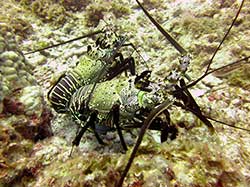
Banded spiny lobster (Panulirus marginatus) on a reef about 80 feet deep at French Frigate Shoals. Credit: Stephen Matadobra/UH-Mānoa
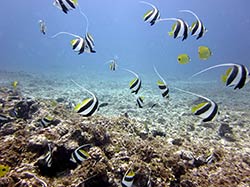
Pennant Butterflyfish (Heniochus diphreutes) on a reef about 80 feet deep at French Frigate Shoals. Credit: Stephen Matadobra/UH-Mānoa
The RAMP uses stratified sampling to survey reef fish, corals and other invertebrates, and algae. Sites are chosen by stratified depth at locations representing the broadest coverage of coral reef habitat. Survey locations are randomly selected prior to the expedition using statistical analysis software and mapped using Geographical Information System (GIS). Secondary survey sites are also identified in the event that a primary site turns out to be unsuitable for sampling (e.g., non-reef habitat, unsafe sea conditions) and a substitute site is needed. This standardized method enables scientists to compare the health of coral reef ecosystems over time.
Before these expeditions, little was known about the makeup of the reefs in the NWHI. For example, prior to the 2000 NOWRAMP expedition, there were only eight species of algae known from French Frigate Shoals; after just the first two years of RAMP, more than 130 species were collected there, and the known records of coral species in the NWHI grew from 22 to 52 species in just two years.
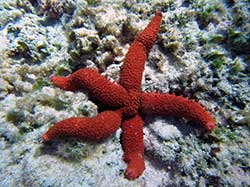
The seastar Mithrodia fisheri on a shallow backreef at French Frigate Shoals. Credit: Toni Parras/NOAA
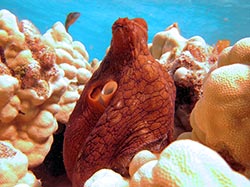
Day octopus (Octopus cyanea) peeks out of lobe coral (Porites sp.) on a shallow reef at French Frigate Shoals. Credit: Paula Ayotte/CRED
As part of PMNM’s mission is to train and mentor the next generation of marine mangers and scientists, this expedition includes Marine Biology undergraduates from University of Hawaii’s Quantitative Underwater Ecological Surveying Techniques (QUEST) program. Each year since 2011, the Monument offers up scholarships to talented young scientists to participate in RAMP. The selected students are given an intensive one week dive training on O‘ahu before departure. You’ll learn more about them in upcoming expedition logs, so stay tuned!
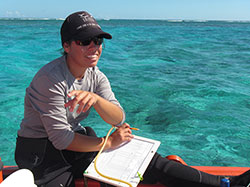
University of Hawaiʻi Marine Biology and Hawaiian Studies student Kanoelani Steward takes notes between survey dives at French Frigate Shoals. Credit: Toni Parras/NOAA
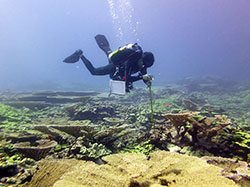
University of Hawaiʻi Marine Biology student Stephen Matadobra conducts a transect at French Frigate Shoals using a monopod to record sections of the reef. Credit: Tate Wester/UH-Mānoa
Return to RAMP Expedition Log.
